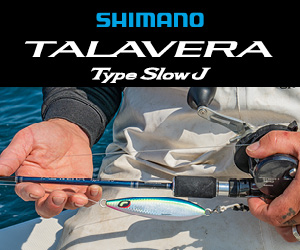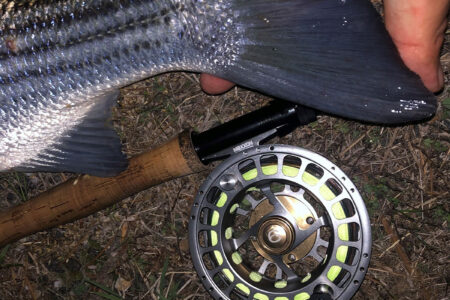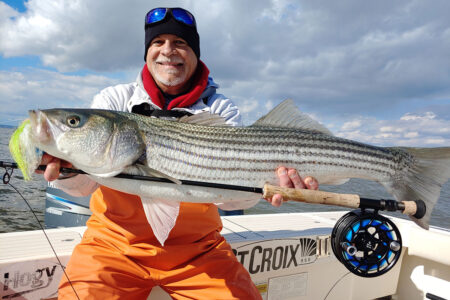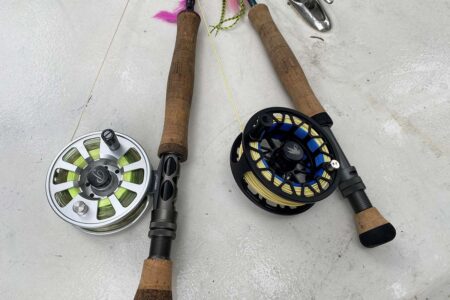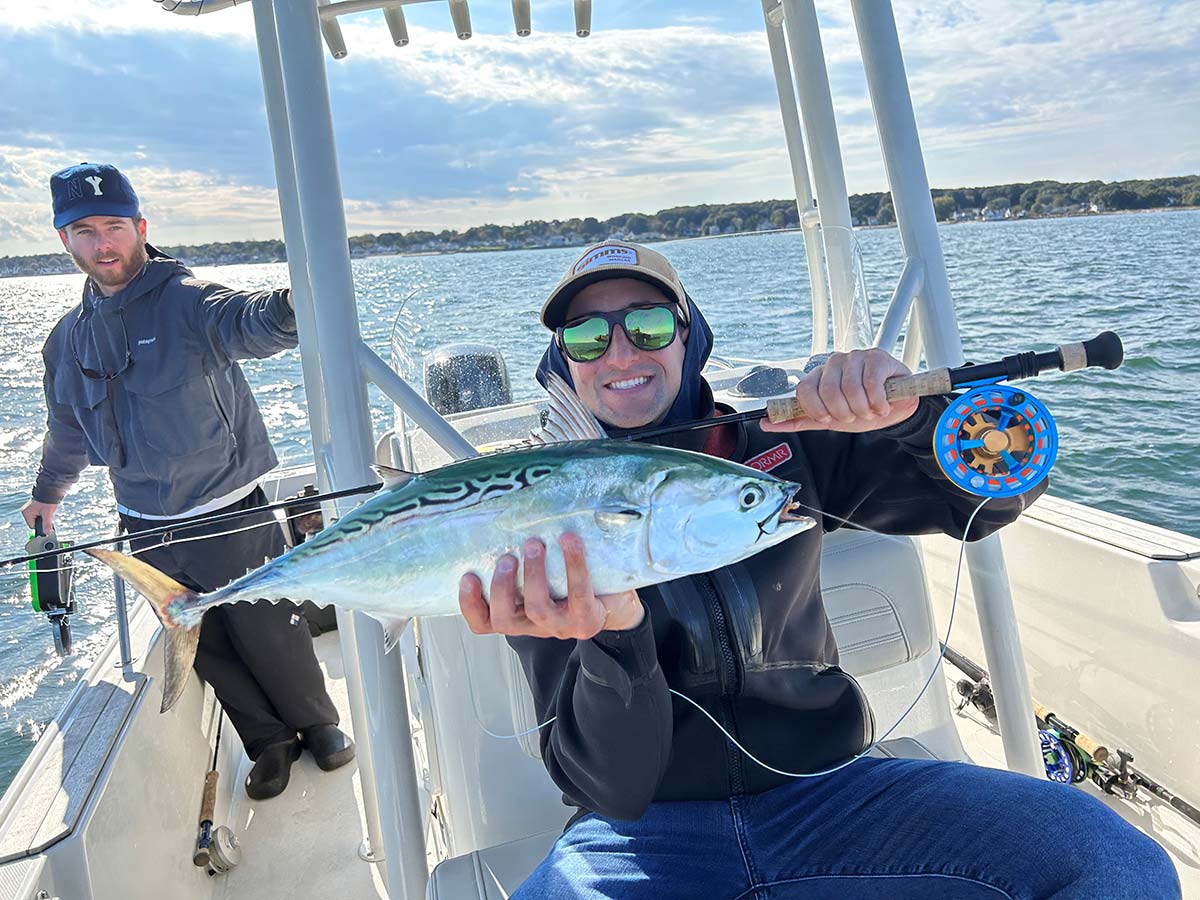
A few more ways to work a fly for false albacore.
Last year, we were faced with a scenario that held consistently for weeks on end and was different from what we saw in the past. The false albacore were feeding on bay anchovies (nothing new there) and moving directly downtide, swimming faster than the current. Entire schools were doing this. Some of those tides were really moving, too, and the albacore were moving faster. They wouldn’t hit a fly retrieved moving up current or cross-current either. In fact, the only successful presentation was a “head on” shot casting directly up current, or a little up and across and retrieving directly downtide, the same direction the albies were swimming. You had to really move that fly just to stay tight and to keep it moving. The two-handed retrieve may have been the only game in town to coax a reel into singing in this situation.
Other Scenarios
If you’re fishing downtide or down and across current, you can use the one-handed strip effectively because the current is helping to keep tension on your line and fly, making it easier to stay tight and manipulate the fly. Of course, the two-handed retrieve will work well here too.
To set the hook (with the two-handed retrieve), strip right into the fish (strip tight), then pull sharply with your wrist and forearm on the fly line. Then, pick the rod out of your armpit and do a one-handed strip strike or two for insurance; with the one-handed strip, simply strip strike.
Now, there are some very fine albie fly anglers who solely use the one-handed strip retrieve and have had great success with it. Master albie angler Ted (Red Jacket) Shaine of Montauk comes to mind as one. Suppose you have no trouble with this traditional retrieve when albie fishing; by all means, stick to it. But if not, or if you’re not very experienced, do try the two-handed. In fact, even if you’re a seasoned albie angler and haven’t used the two-hand retrieve, I think you should give it a try. You may be pleasantly surprised.
Some Albie Suggestions
Try an 8-foot leader instead of a 9-footer. You’ll find it turns over better, you have more control when casting it, and for some reason, it tangles a lot less. Albies have concentrated on eating bay anchovies in recent years, although they will at times hone in on peanut bunker, butterfish, silversides, and immature menhaden. Some favorite bay anchovy flies are Surf Candy, Glen Mikkleson Anchovy (wonderfully tied if by Glen), Hard Body Anchovy or Shiner, Henry Cowen’s Orvis Anchovy, Kevin Callahan’s “White Rabbit” – a thin rabbit strip fly.
You Can Be Successful Blind Casting
- Along rips — especially when you see rolling fish surfacing in them, even if you see them only occasionally as you fish.
- This comes from Craig Cantelmo — Guide and Van Staal rep from the North Shore of Long Island. Blind cast along a beach where albies are regularly caught, and especially where they have been caught recently. They move parallel to the shoreline and often close to the beach. Keep casting. Sooner or later, an unseen “passerby” will see your fly.
- Close to the jetty at the “West Wall” at Point Judith, RI. Fish move along it, in fact, right next to it. If albies have been there that day but are not showing at the moment, be persistent, and keep casting. Be confident that you’re “in the zone,” and sooner or later, you will be rewarded with some good music!
